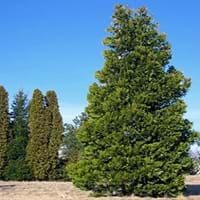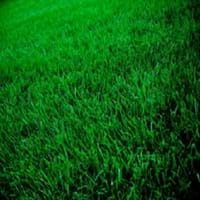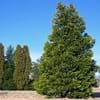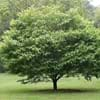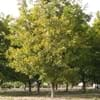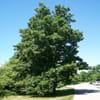Life Span
Annual and Perennial
Perennial
Origin
Western United States, California, Mexico
China
Types
Not Available
Bigleaf hydrangea, Hortensia, Smooth hydrangea, Oakleaf hydrangea, Annabelle
Number of Varieties
Not Available
Habitat
low mountains, Mountain tops, Subtropical climates, Temperate Regions
Forest edges, Hillside, Woods
USDA Hardiness Zone
5-8
7-10
Sunset Zone
1a, 1b, 2a, 2b, 3a, 3b, 4, 5, 6, 7, 8, 9, 10, 11, 12, 14, 15, 16, 17, 18, 19, 20, 21, 22, 23, 24
7, 9, 10
Habit
Upright/Erect
Spreading
Flower Color
Non Flowering Plant
Blue, Dark Purple, Light Purple, Red, White
Flower Color Modifier
Bicolor
Bicolor
Fruit Color
Sandy Brown
Not Available
Leaf Color in Spring
Green
Light Green, Yellow green
Leaf Color in Summer
Green
Light Green
Leaf Color in Fall
Green
Light Green, Yellow green
Leaf Color in Winter
Green
Light Green, Lemon yellow, Tan
Leaf Shape
Pinnate
Oblovate
Plant Season
Spring, Summer, Fall, Winter
Spring, Summer, Fall, Winter
Sunlight
Full Sun, Partial Sun
Full Sun
Type of Soil
Loam, Sand
Loam, Sand
The pH of Soil
Acidic, Neutral
Acidic, Neutral
Soil Drainage
Well drained
Well drained
Bloom Time
Not Available
Indeterminate
Tolerances
Drought
Cold climate, Drought
Where to Plant?
Ground
Ground
How to Plant?
Stem Planting
Seedlings
Plant Maintenance
Medium
Medium
Watering Requirements
Needs less watering, Water occasionally
Average Water Needs, Over-head watering, Requires watering in the growing season
In Summer
Lots of watering
Lots of watering
In Spring
Moderate
Moderate
In Winter
Average Water
Average Water
Soil pH
Acidic, Neutral
Acidic, Neutral
Soil Type
Loam, Sand
Loam, Sand
Soil Drainage Capacity
Well drained
Well drained
Sun Exposure
Full Sun, Partial Sun
Full Sun
Pruning
Prune if you want to improve plant shape, Remove damaged leaves, Remove dead branches, Remove dead leaves
Prune to control growth, Remove dead leaves
Fertilizers
No fertilizers needed
All-Purpose Liquid Fertilizer, Nitrogen, Phosphorous
Pests and Diseases
Insects
Red blotch
Plant Tolerance
Drought
Drought
Flowers
None
Insignificant
Flower Petal Number
Not Available
Single
Fragrant Bark/Stem
Yes
No
Foliage Texture
Medium
Medium
Foliage Sheen
Matte
Glossy
Attracts
Birds
Bees, Flies
Allergy
no allergic reactions
Chest tightness, Diarrhea, Dizziness, Nausea, Vomiting
Aesthetic Uses
Showy Purposes
Beautification, Ground Cover, Landscape Designing, Showy Purposes
Beauty Benefits
Not Available
No Beauty Benefits
Environmental Uses
Air purification
Air purification, Food for insects, Prevent Soil Erosion
Medicinal Uses
Stomach pain
Fever, Kidney problems, Urinary tract problems
Part of Plant Used
Bark, Leaves
Flowers, Root
Other Uses
Making Perfumes, Used in pencil industry
Decoration Purposes, Showy Purposes
Used As Indoor Plant
No
No
Used As Outdoor Plant
Yes
Yes
Garden Design
Screening / Wind Break, Shade Trees, Street Trees
Lawns and Turf
Botanical Name
CALOCEDRUS decurrens
EREMOCHLOA ophiuroides
Common Name
Incense Cedar
Centipede Grass
In Hindi
Incense Cedar
Hydrangea
In German
Zeder
Hortensie
In French
Encens Cedar
Hortensia
In Spanish
cedro de incienso
Hortensia
In Greek
θυμίαμα Κέδρος
υδραγεία
In Portuguese
cedro de incenso
Hortênsia
In Polish
kadzidło Cedar
Hortensja
In Latin
incensum Cedar
Hibiscus
Phylum
Tracheophyta
Embryophyta
Class
Pinopsida
Liliopsida
Order
Pinales
GLUMIFLORAE
Family
Cupressaceae
Poaceae
Genus
Calocedrus
Ophiuroides
Clade
Not Available
Angiosperms, Monocots
Tribe
Not Available
Andropogoneae
Subfamily
Not Available
Sorghum
Number of Species
Not Available
Season and Care of Incense Cedar and Centipede Grass
Season and care of Incense Cedar and Centipede Grass is important to know. While considering everything about Incense Cedar and Centipede Grass Care, growing season is an essential factor. Incense Cedar season is Spring, Summer, Fall and Winter and Centipede Grass season is Spring, Summer, Fall and Winter. The type of soil for Incense Cedar is Loam, Sand and for Centipede Grass is Loam, Sand while the PH of soil for Incense Cedar is Acidic, Neutral and for Centipede Grass is Acidic, Neutral.
Incense Cedar and Centipede Grass Physical Information
Incense Cedar and Centipede Grass physical information is very important for comparison. Incense Cedar height is 2,130.00 cm and width 180.00 cm whereas Centipede Grass height is 2.50 cm and width 3.00 cm. The color specification of Incense Cedar and Centipede Grass are as follows:
Incense Cedar flower color: Non Flowering Plant
Incense Cedar leaf color: Green
Centipede Grass flower color: Blue, Dark Purple, Light Purple, Red and White
- Centipede Grass leaf color: Light Green and Yellow green
Care of Incense Cedar and Centipede Grass
Care of Incense Cedar and Centipede Grass include pruning, fertilizers, watering etc. Incense Cedar pruning is done Prune if you want to improve plant shape, Remove damaged leaves, Remove dead branches and Remove dead leaves and Centipede Grass pruning is done Prune to control growth and Remove dead leaves. In summer Incense Cedar needs Lots of watering and in winter, it needs Average Water. Whereas, in summer Centipede Grass needs Lots of watering and in winter, it needs Average Water.
